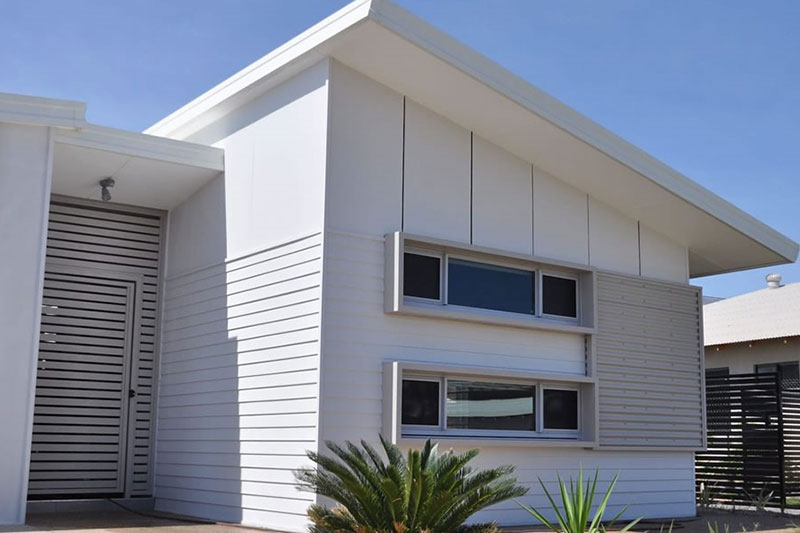
In the construction materials, fibre cement sheets have carved out a prominent place in Australian homes and buildings. Known for their durability, versatility, and resistance to environmental factors, fibre cement sheets provide a reliable solution for various construction needs.
This post highlights the top applications of fibre cement sheets, highlighting their significance in residential and commercial settings across Australia.
What Are Fibre Cement Sheets?
Fibre cement sheets, referred to as fibre cement panels, are composite building materials made primarily from cement, cellulose fibres, and sand. This combination results in a product that offers excellent strength, fire resistance, and weather durability. Unlike traditional wood products like plywood flooring sheets, fibre cement sheets are impervious to termites, rot, and moisture damage, making them an ideal choice for Australia’s diverse and harsh climate conditions.
These sheets come in various thicknesses and sizes and can be finished in multiple textures and colours to suit different architectural styles and functional requirements. Their versatility means they can be employed in external and internal applications, which will be explored in the following sections.
External Applications
The most common use of fibre cement sheets in Australian construction is for external cladding. Fibre cement cladding is highly popular because it combines aesthetic appeal with robustness. It mimics the look of timber or masonry without the vulnerabilities associated with these materials. Australian homes frequently use fibre cement panels as weatherboards, facade cladding, and soffits.
These sheets provide excellent resistance to wind, rain, and UV radiation, critical factors in Australia’s coastal and inland regions. Their non-combustible nature offers enhanced fire protection—a vital consideration given Australia’s susceptibility to bushfires. Fibre cement boards are low maintenance, requiring only occasional cleaning, which appeals to homeowners looking for longevity and ease of upkeep.
Applications
Inside buildings, fibre cement sheets serve various functions, proving their adaptability beyond external use. They are used for wall linings in wet areas such as bathrooms, laundries, and kitchens because they resist moisture much better than conventional plasterboard. This quality helps prevent mould growth and structural damage, enhancing the indoor environment’s health and safety.
Fibre cement panels are employed as backing boards for tiles and other finishes, providing a stable and water-resistant substrate. Unlike plywood flooring sheets, which can warp or degrade with moisture exposure, fibre cement sheets maintain their integrity, making them an excellent choice for internal wall solutions that demand durability and moisture resistance.
Flooring Substrates
While plywood flooring sheets are traditionally used as substrates beneath flooring materials, fibre cement sheets are increasingly adopted in this role in areas where moisture is a concern. The high moisture resistance and dimensional stability of fibre cement sheets make them suitable for use under tiles, vinyl, or carpet in wet or humid environments.
This application benefits Australian homes where bathrooms, laundry rooms, and kitchens require substrates that will not swell or deteriorate over time. Using fibre cement boards as flooring substrates helps ensure the longevity of the floor finish and prevents costly repairs associated with water damage.
Commercial and Industrial Uses
Beyond residential settings, fibre cement sheets have substantial applications in commercial and industrial construction. Their fire-resistant and sound-insulating properties make them ideal for office buildings, schools, hospitals, and retail spaces. Fibre cement panels are chosen for wall partitions, ceilings, and exterior facades in these environments.
The durability of fibre cement boards also suits industrial applications where exposure to chemicals, moisture, and physical wear is common. Warehouses, factories, and other industrial buildings benefit from the strength and low maintenance of fibre cement sheets, which can withstand harsh conditions without compromising safety or structural integrity.
Fibre cement sheets offer architects and builders design flexibility. They can be easily cut and shaped to accommodate different layouts and aesthetic preferences, supporting innovative architectural designs in commercial projects. This versatility, combined with compliance with Australian building codes and standards, reinforces fibre cement’s role as a preferred material in large-scale construction.
Conclusion
Fibre cement sheets are a cornerstone of modern Australian construction due to their remarkable versatility, durability, and resistance to environmental challenges. Whether used as external cladding, internal wall linings, flooring substrates, or in commercial and industrial applications, fibre cement boards provide a reliable, cost-effective, and aesthetically pleasing solution.
Compared to traditional materials such as plywood flooring sheets, fibre cement sheets stand out for their moisture resistance, fire retardancy, and minimal maintenance needs. As more builders and homeowners recognise these benefits, the adoption of fibre cement products continues to grow, ensuring safer and longer-lasting buildings across Australia.
For those involved in construction or renovation projects, understanding the broad range of applications of fibre cement sheets can help make informed material choices that balance performance, appearance, and cost, key factors in building successful Australian homes and commercial spaces.